Lots of impressive art turned up in 2024 museum exhibitions, whether or not the entire show was any good. Here are 10 memorable examples from shows at seven area museums.
Lots of impressive art turned up in 2024 museum exhibitions. Sometimes the full show was notable, and sometimes it was less so, but sensational individual paintings, sculptures, installations and other works have a way of standing out from the crowd.
Here are 10 memorable examples from shows at seven museums in the last year, listed in chronological order of the exhibitions’ openings:
Lucas Cranach the Elder, ‘Adam and Eve’
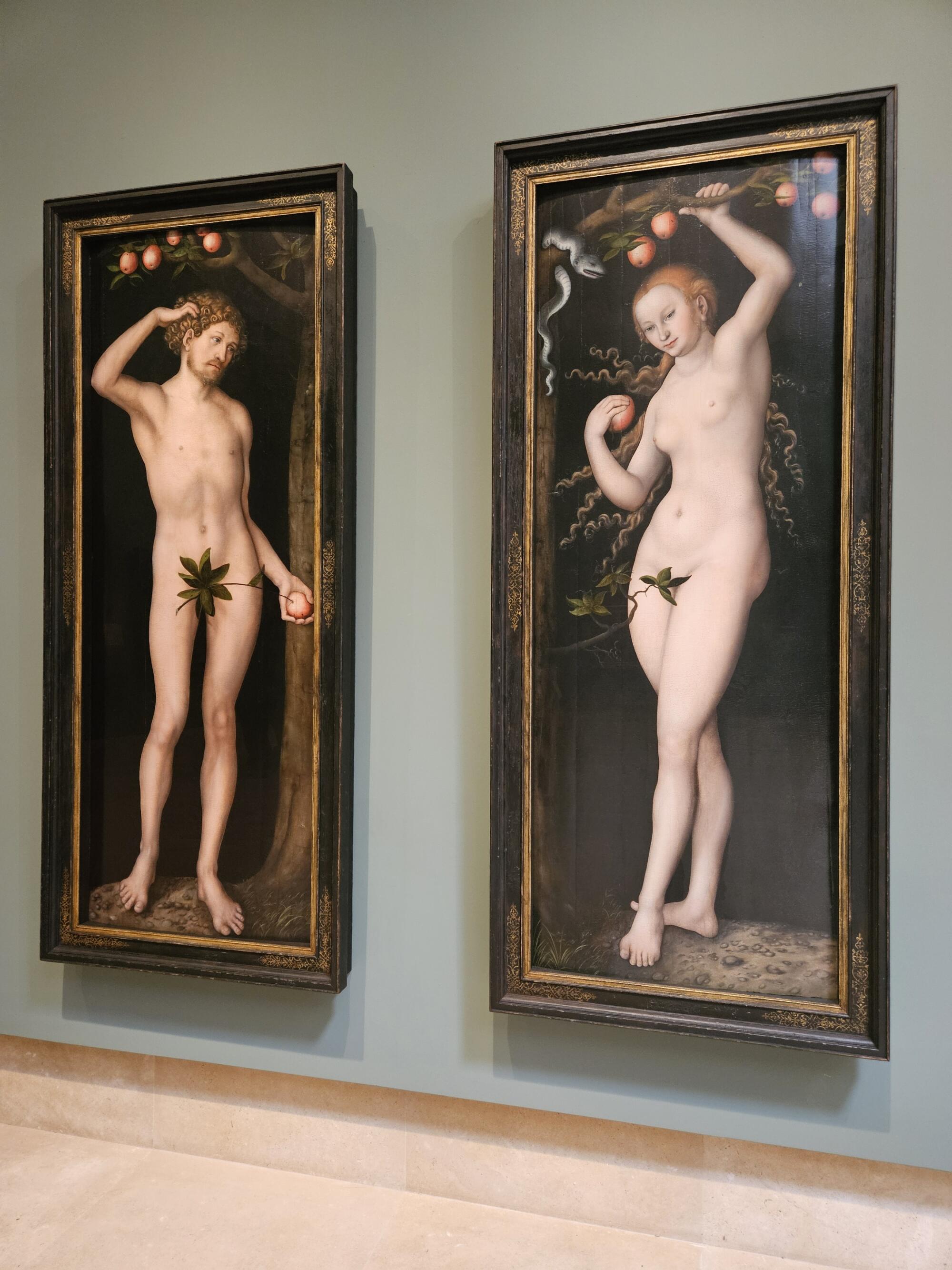
Lucas Cranach the Elder, “Adam and Eve,” circa 1530, oil on panel.
(Christopher Knight / Los Angeles Times)
Lucas Cranach (Germany, 1472-1553) was in his late 50s when he painted this magnificent pair of life-size panels, which show the hapless biblical protagonists of humanity’s fall from grace. The artist, a pal of Martin Luther, had considerable life experience. He made Eve the shining star — a graceful beauty, her shapely body framed by an explosive sunburst of wavy hair. Apprehensive Adam looks upon her with a head-scratching degree of uneasy anticipation, an apple clutched low in his hand, deferring to the forbidden fruit confidently raised in hers. (His apple asks, “This?” Her apple answers, “This!”) Getty Museum conservators spent 2½ years skillfully restoring Cranach’s masterpiece, a high point of the permanent collection at Pasadena’s Norton Simon Museum.
“Conserving Eden: Cranach’s ‘Adam and Eve’ From the Norton Simon Museum,” J. Paul Getty Museum
Judithe Hernández, ‘Santa Desconocida’
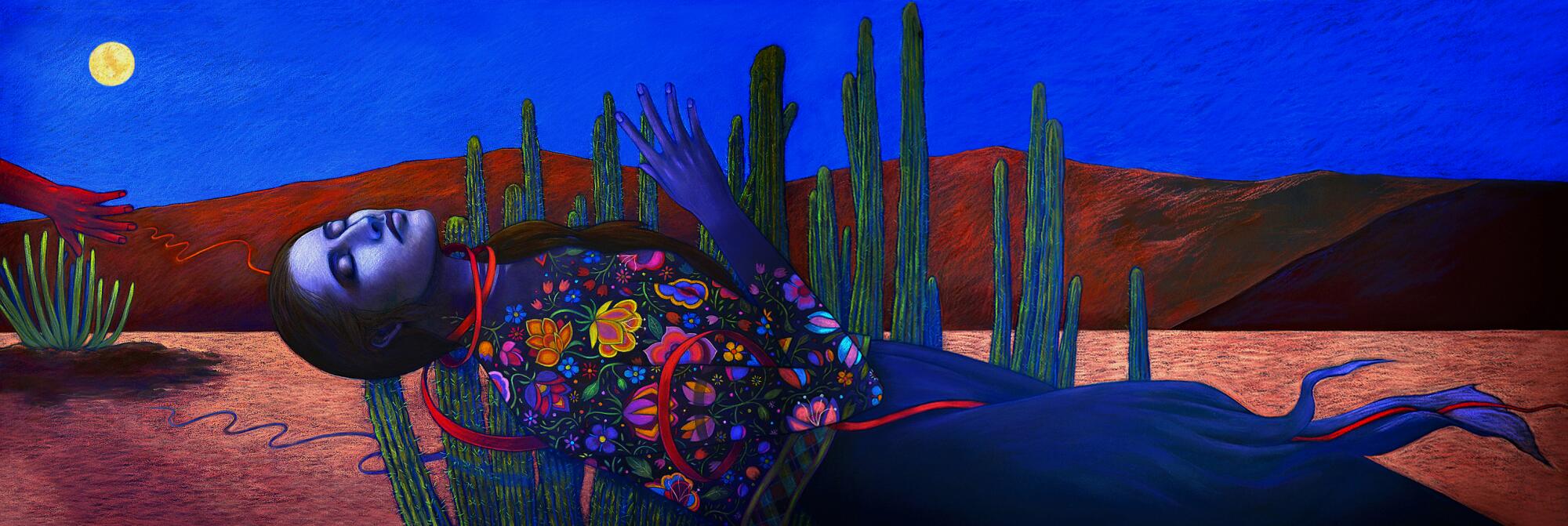
Judithe Hernández, “Santa Desconocida,” 2016, pastel on paper.
(Riverside Art Museum)
The beautiful “unknown saint” of Hernandez’s radiant pastel drawing, a two-panel composition more than 7 feet wide, hovers in a horizontal space, floating like drowned Ophelia in John Everett Millais’ famous 1851 painting of Hamlet’s suicidal foil. Rather than a watery grave, however, a mysterious moonlit desert is where she’s adrift, a row of spiky cactuses behind her appearing to pierce her body. Hands raised in benediction, this secular saint is a martyr — the artist’s poignant, even haunted meditation on the hundreds of women working in the maquiladoras around the Mexican border city of Juárez who have been abducted and killed, suggested by the blood-red hand fleeing the picture at the left.
Sargent Claude Johnson, ‘Chester’
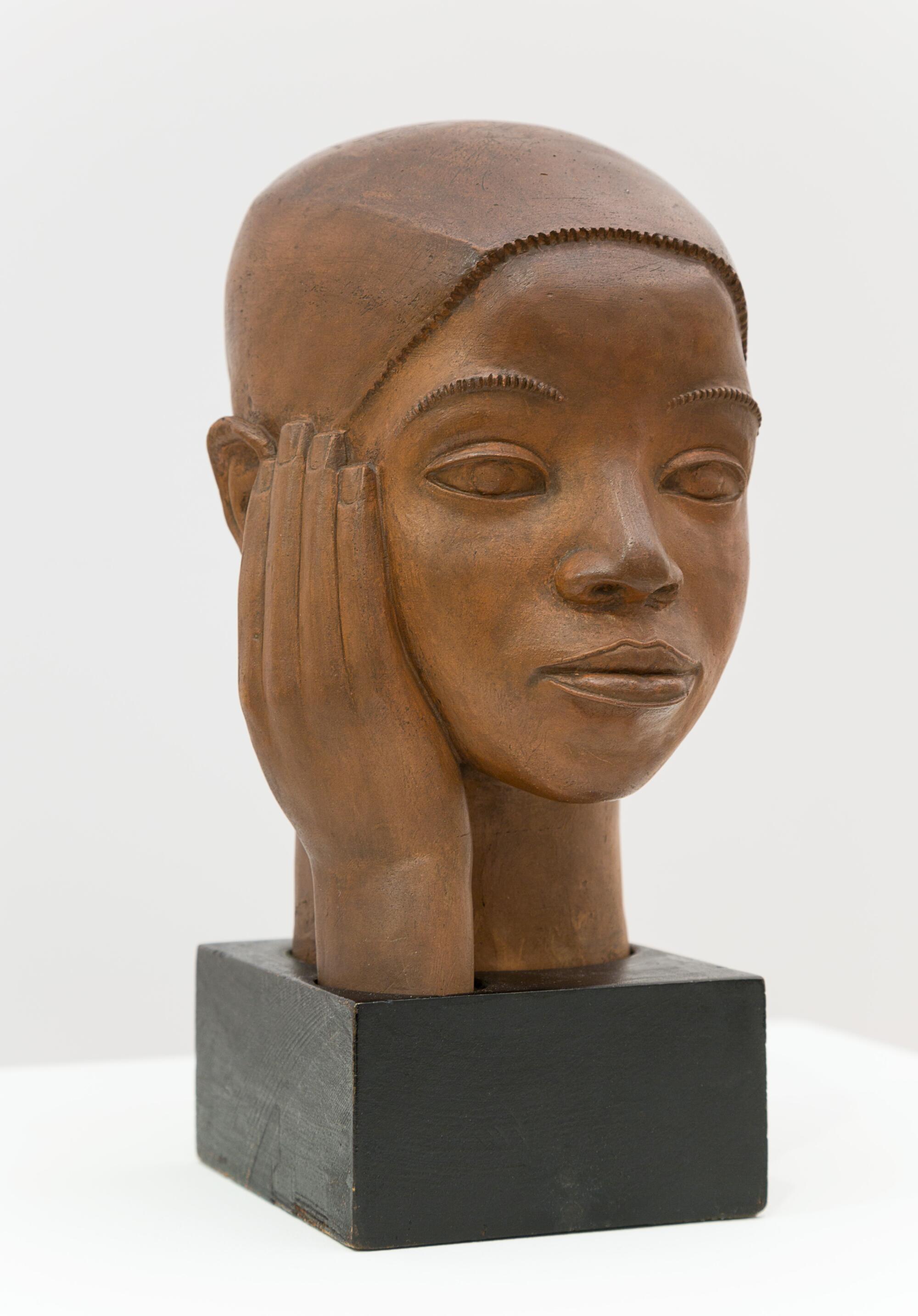
Sargent Claude Johnson, “Chester,” 1931, terracotta.
(Don Ross / Estate of Sargent Claude Johnson)
We don’t know who Chester was. The young man in Johnson’s sculpture was possibly a general cultural symbol more than an individual portrait. Johnson (1888-1967), the orphaned son of a white father and a Black and Indigenous mother, moved to California from Massachusetts in 1915, and as his art developed, he was taken with the social expression of identity in artists of both the Harlem Renaissance and the Mexican mural movement. Chester gently cups his smooth, genial face in his gracefully refined hand, an unusual gesture that quietly expresses self-love. The sculpture is a subtly powerful emblem of what came to be known as Black pride.
“Sargent Claude Johnson,” Huntington Library, Art Museum, and Botanical Gardens, San Marino
Ed Ruscha, ‘Standard Station, Ten-Cent Western Being Torn in Half’
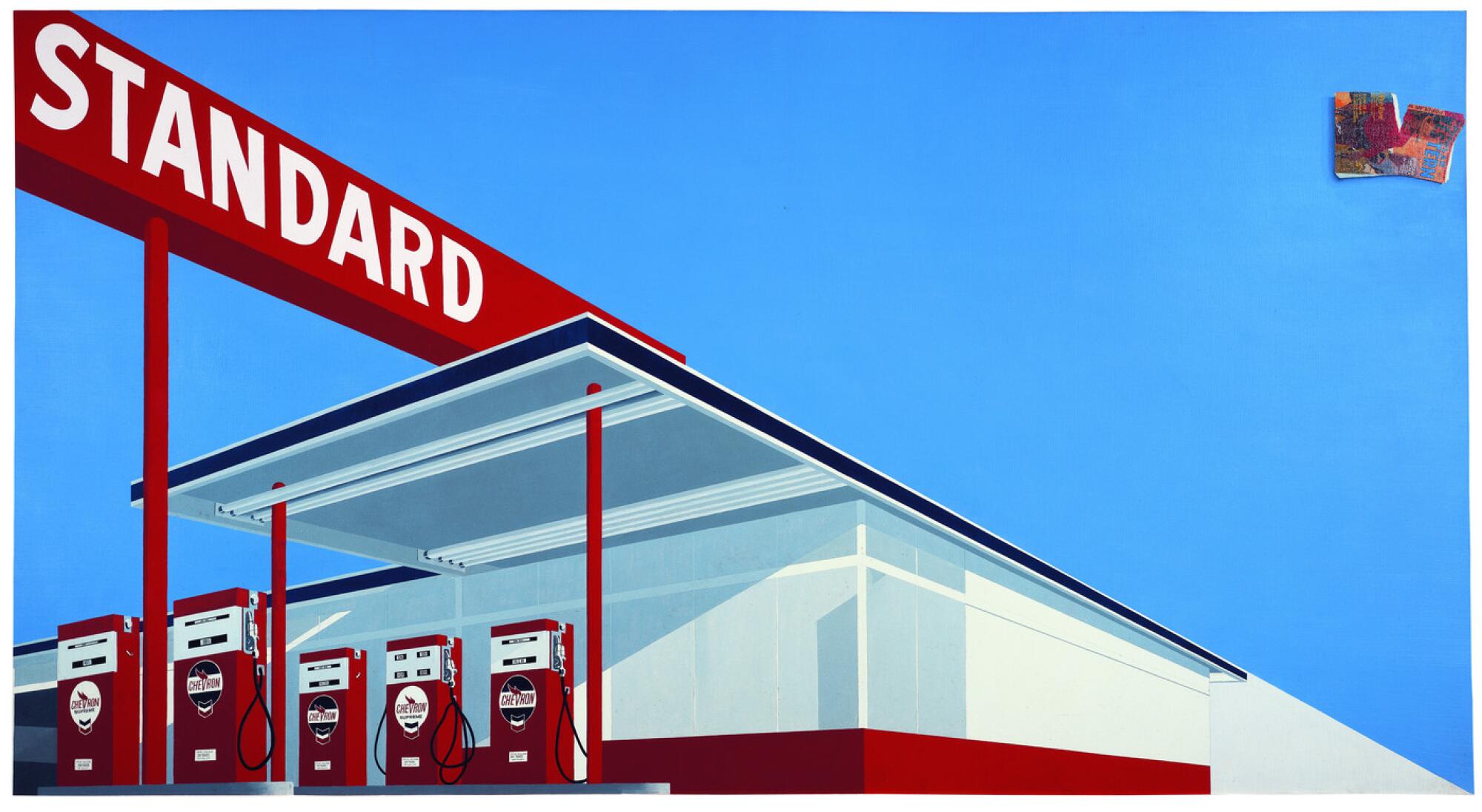
Ed Ruscha, “Standard Station, Ten-Cent Western Being Torn in Half,” 1964, oil on canvas.
(Museum Associates / LACMA)
A generic but monumental gas station splits the 10-foot-wide canvas in two on an eccentric diagonal, flattening any illusion of three dimensions. The station is one Ruscha saw often in Amarillo, Texas, when he drove back and forth from Los Angeles to his childhood home in Oklahoma City. However, it could be anywhere, backed as it is by just a smooth azure sky without any shred of identifying landscape. As product, place and picture, it’s “standard” in more ways than one. Tellingly, in the upper right-hand corner, Ruscha added a cheap Western cowboy magazine, its rowdy narrative of American manifest destiny having been torn in two. Working in L.A. as the New York art scene boomed, Ruscha inserted serious doubt into prevailing cultural norms.
“Ed Ruscha / Now Then,” Los Angeles County Museum of Art
Mickalene Thomas, ‘Afro Goddess Looking Forward’
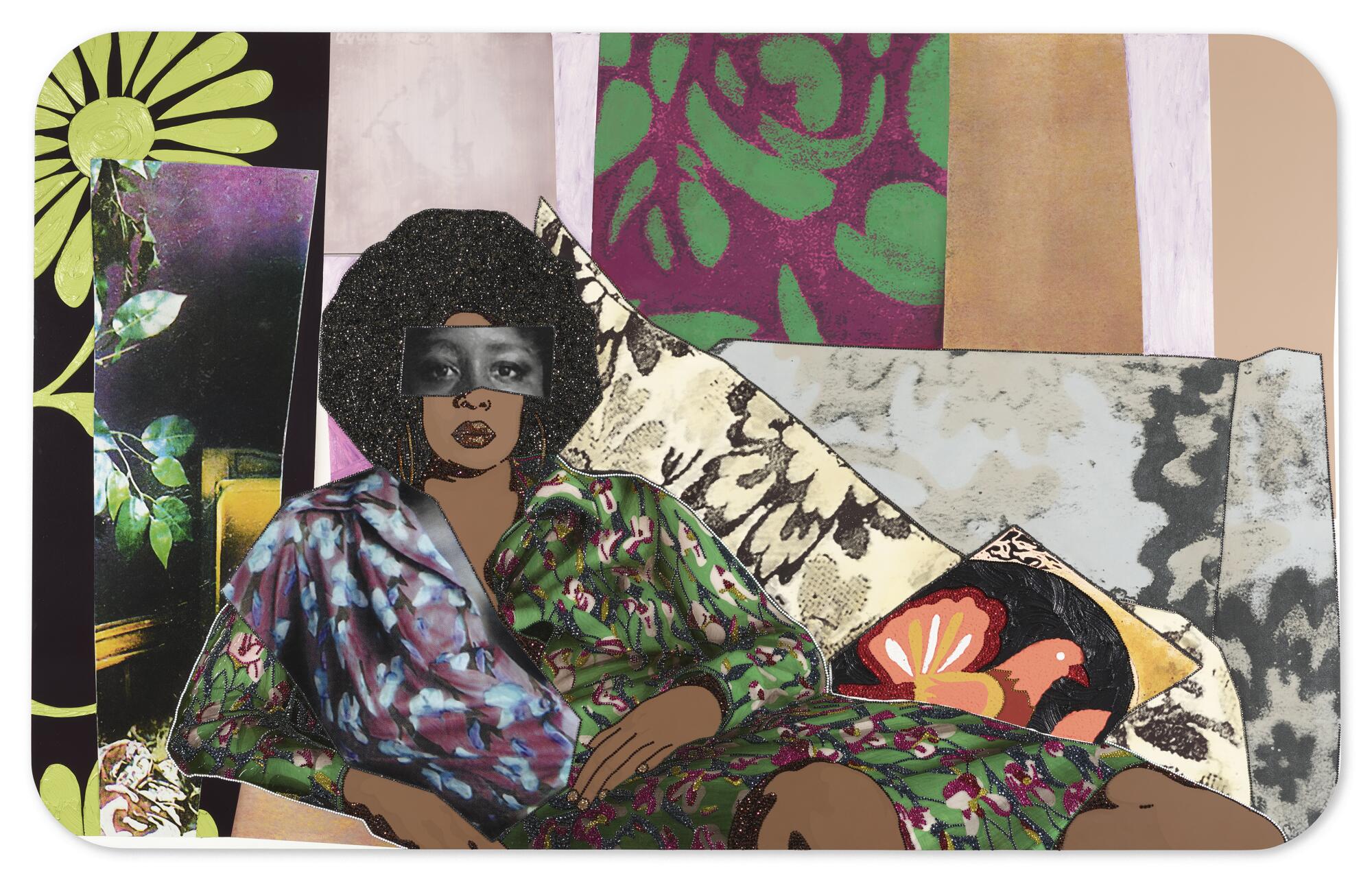
Mickalene Thomas, “Afro Goddess Looking Forward,” 2015, rhinestones, acrylic and oil on wood panel.
(Mickalene Thomas)
Adjacent to a floral cornucopia atop a table, a colorful modern woman with a stylish haircut and vibrant clothing that merges with the picture’s voluptuously patterned background reclines on a couch, staring directly at a viewer with a confident air. This description of Henri Matisse’s luxurious 1937 “Yellow Odalisque” also fits Thomas’ splendid self-portrait. (The Matisse, one of many such works, is a treasure of the Philadelphia Museum of Art, just across the river from Camden, N.J., where Thomas grew up.) Like the French painter modernizing the 19th century tradition of a subservient and reclining female figure for the assertive 20th century, the American artist inserts contemporary signals, including photographic collage and rhinestones, to update and remake the theme for the 21st century. The most significant difference: Rather than a male artist configuring a sensual image of womanhood, a buoyant Thomas takes the reins to represent herself.
Olafur Eliasson, ‘Pluriverse assembly’
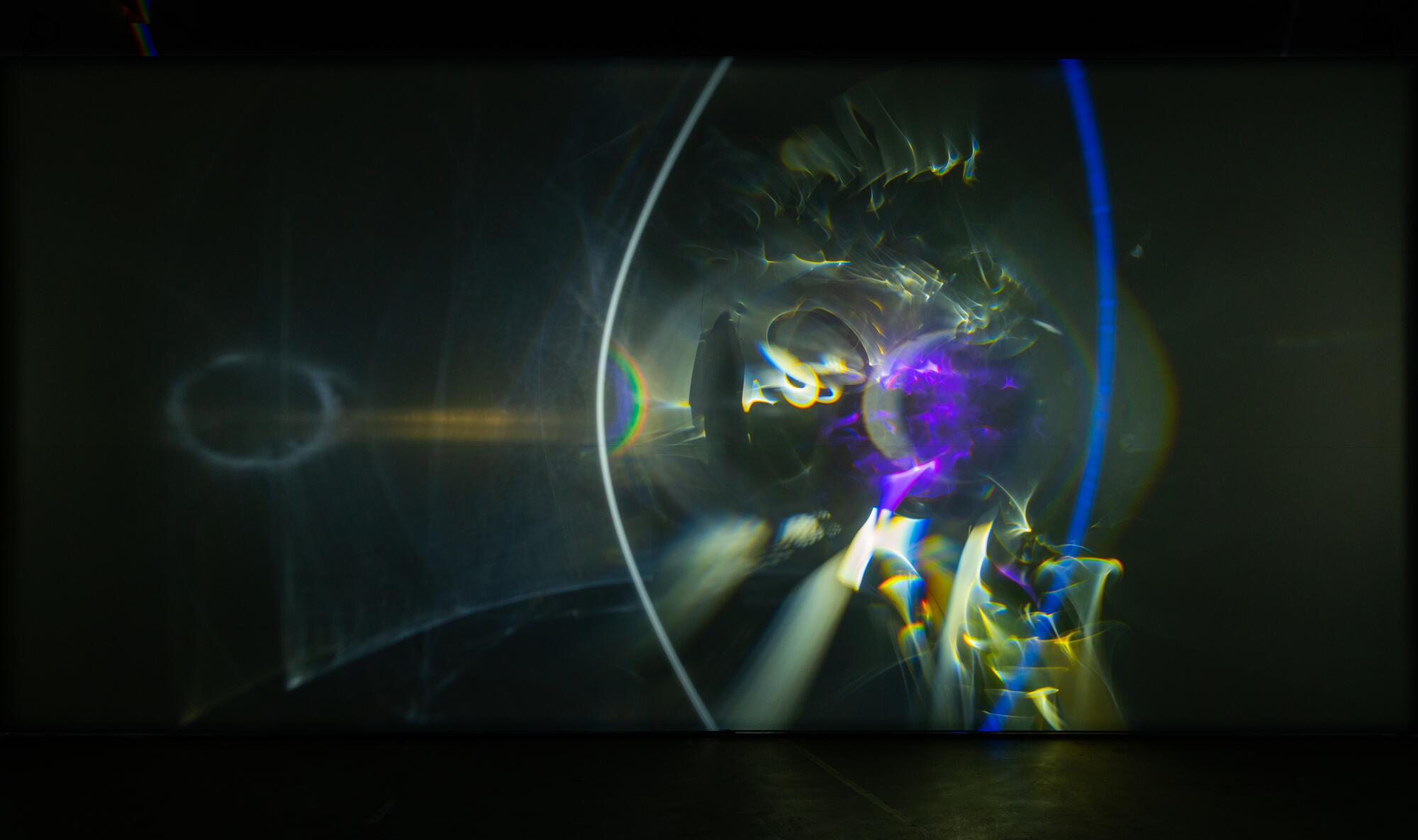
Installation view of Olafur Eliasson’s room-size 2021 mixed media light installation “Pluriverse assembly” at MOCA’s Geffen Contemporary.
(Olafur Eliasson)
It’s quite remarkable what can be achieved with some jewel-tone chunks of clear and multicolored plastic, a couple of high-intensity lamps, a few motors and shiny bits of metal. In this enormous projection piece, Eliasson unfurls a phantasmagoria of shifting shapes and amorphous space across a vast fabric scrim stretched between the walls of a large, darkened museum gallery. The result is an abstract “moving picture,” sliding through a visual cosmos like a mesmerizing animation of a Surrealist painting by Arshile Gorky or Roberto Matta. You’re invited to walk around back to see how the magic out front is being made. In our age of misinformation, disinformation and artificial intelligence, the artist’s frank exposure of what’s operating behind the curtain is tonic.
“Olafur Eliasson: OPEN,” Geffen Contemporary at MOCA
Oskar Fischinger, ‘Multi wave’
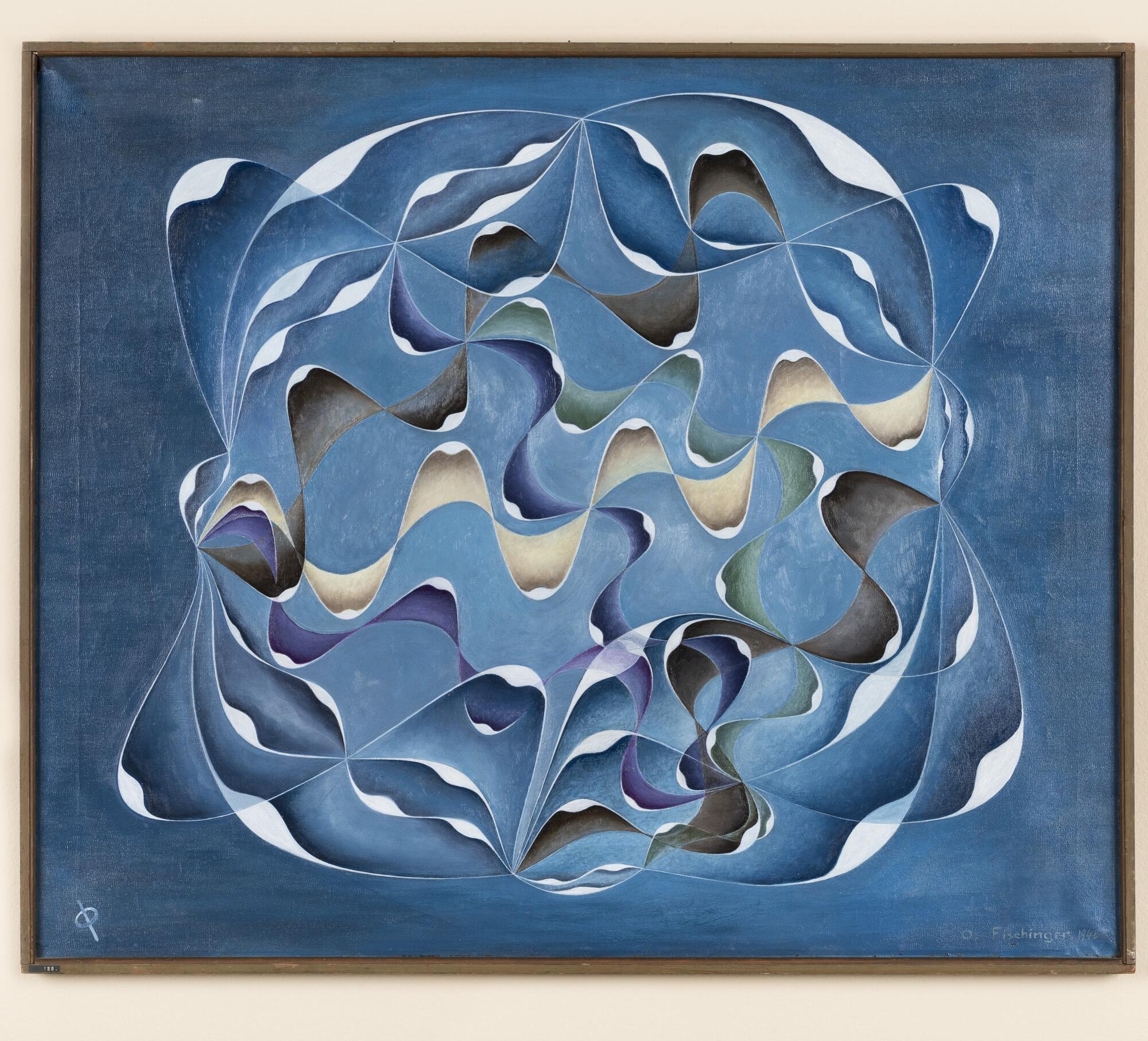
Oskar Fischinger, “Multi wave,” 1948; oil on canvas.
(Palm Springs Art Museum)
What does music look like? Numerous painters in the first half of the 20th century pondered the question of sonic abstraction as a guide to making unprecedented art, proposing a wide variety of abstract rhythms of shape and color. Fischinger was among them, using film and painting as mediums throughout his career, which began in Germany and culminated in Hollywood. A pulsating mass of cerulean edged in white is at the core of this compact, not-quite-square painting, at 30 by 36 inches just six inches wider than it is high. The stable but slightly horizontal rectilinear shape hints at landscape while helping to focus the eye. Undulating forms press outward toward the edges and then fold back in on themselves, like ocean waves or a flower’s petals. The result is a visually sensational picture, its dynamic verve seeming to embody the life of natural forms.
“Particles and Waves,” Palm Springs Art Museum
Camille Claudel, ‘Torso of a Crouching Woman’
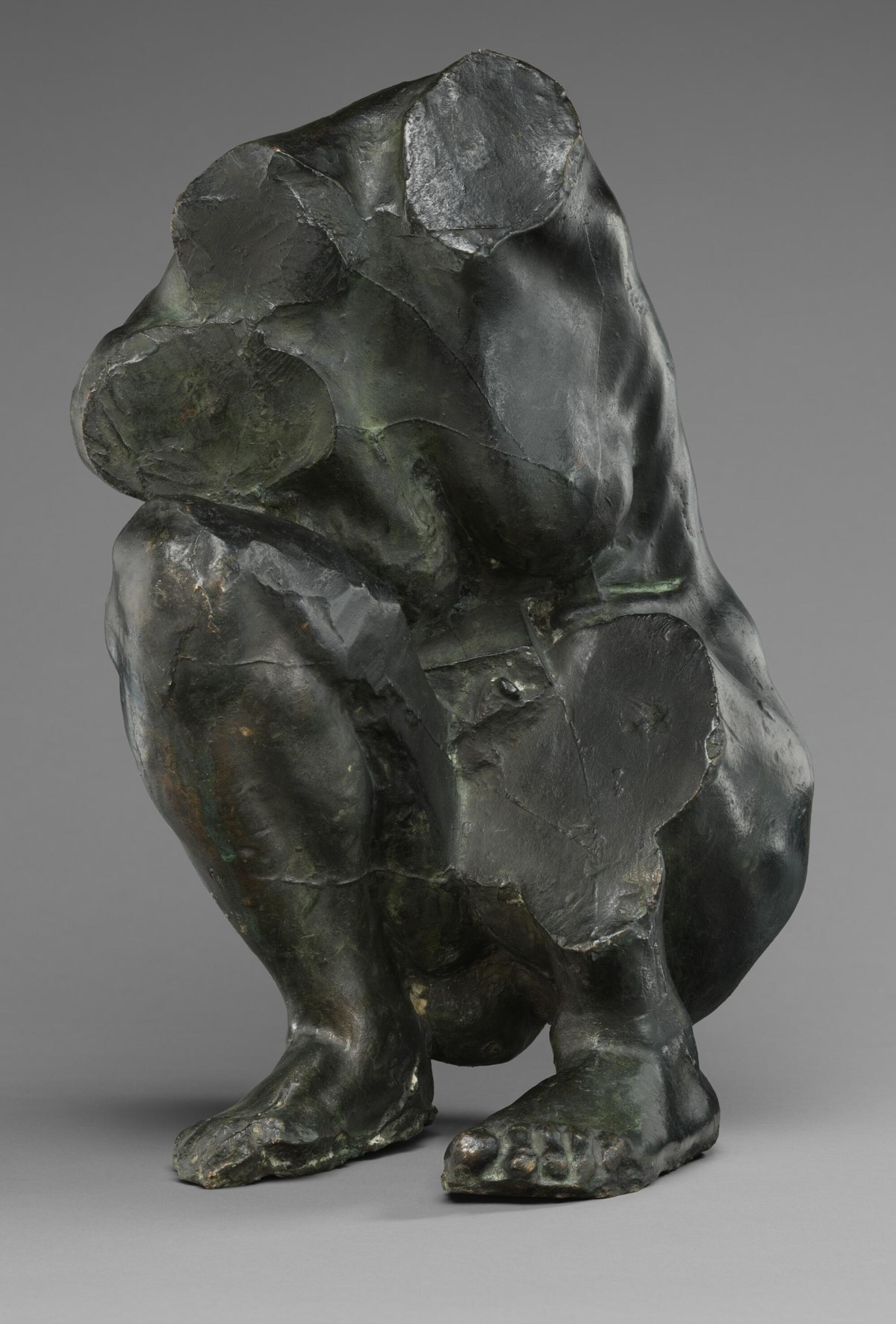
Camille Claudel, “Torso of a Crouching Woman,” modeled circa 1884-85, bronze cast about 1913.
(The J. Paul Getty Museum)
Who knows what prompted Camille Claudel, at 20, to take a blade to the clay model of her sculpture of a headless crouching nude, tilting to one side and balanced precariously on rough feet? Most dramatically, she severed the left leg between thigh and ankle. Claudel had spent considerable time in Paris’ Louvre Museum, where she was well acquainted with its collection of classical Greek and Roman sculptures, many of them broken and missing limbs. A celebrated ancient marble of a crouching Venus, excavated in a Roman settlement near Lyon, France, entered the museum’s collection with noisy fanfare just a few years before Claudel executed her piece. But the woman in her sculpture, made early in her tenure working in the busy studio of Auguste Rodin, leaves classicism far behind. In a startlingly modern conception, the negative space of Claudel’s abrupt amputation exposes — and italicizes — the human body’s dense, inescapable physicality.
“Camille Claudel,” J. Paul Getty Museum
Gentile da Fabriano, ‘The Stigmatization of St. Francis’
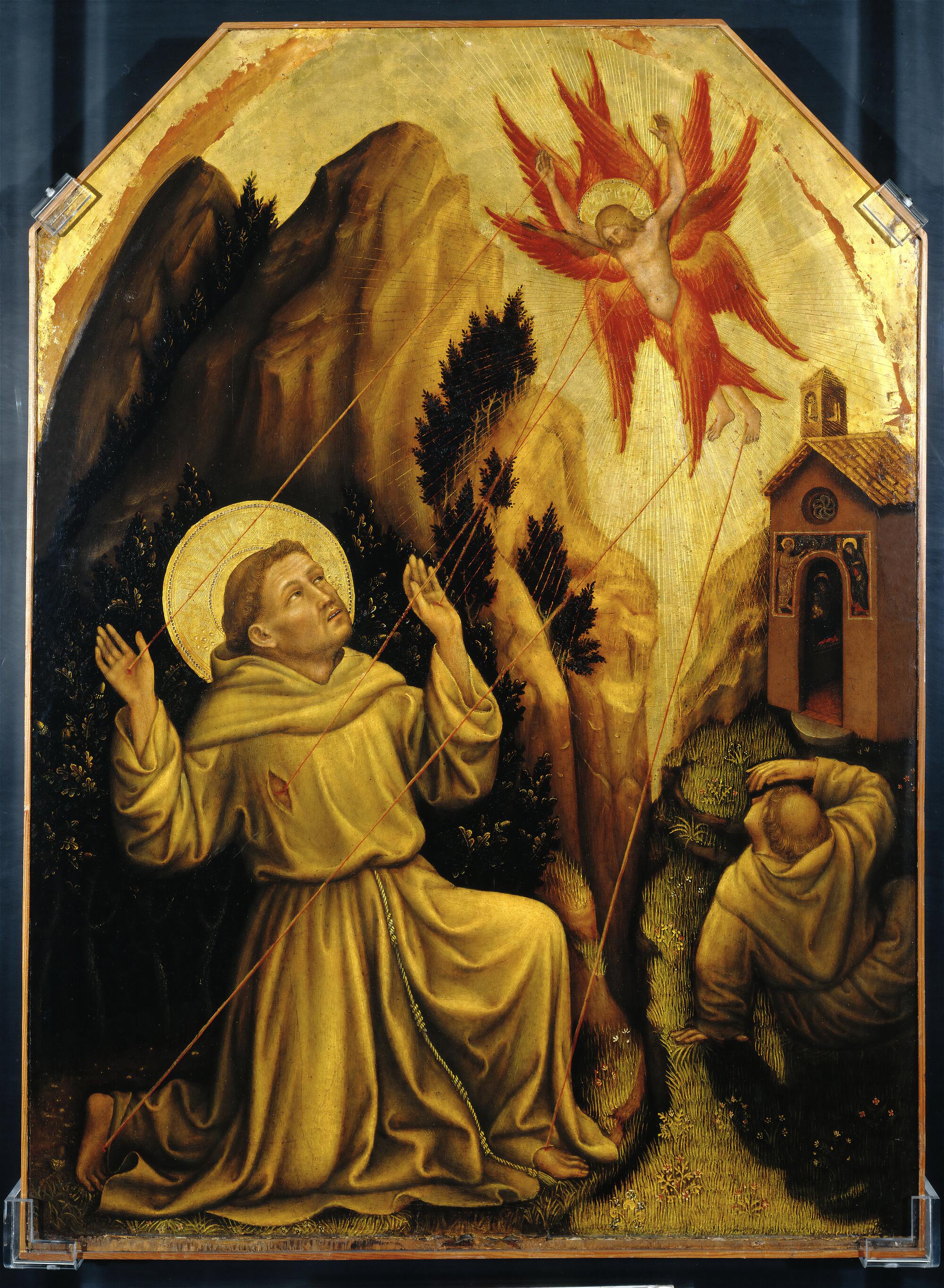
Gentile da Fabriano, “The Stigmatization of St. Francis,” circa 1420, tempera and gold leaf on panel.
(Fondazione Magnani-Rocca, Parma)
Originally a gilded processional standard that would be paraded through town on a pole for specific feast days, Gentile da Fabriano’s dazzling double-sided painting shows the coronation of the Virgin Mary on one side and, on the other, St. Francis receiving the stigmata. Rays of golden light beam down from a winged celestial being to pierce the humble saint’s hands, feet and side, echoing the mortal wounds suffered during Christ’s crucifixion. Gentile’s composition likens Francis, a chosen spiritual trailblazer, to a string puppet, his worldly movements henceforth to be directed from above. At some point during the last 600 years, the gold-leafed wood panel was sliced in two. The coronation side has been in the Getty Museum’s collection for almost 50 years. For the very first time, it was reunited with the severed Francis side, now housed in a museum in Parma, Italy.
“Lumen: The Art and Science of Light,” J. Paul Getty Museum
‘Plate With Teotihuacan War Serpent’

“Plate With Teotihuacan War Serpent,” Guatemala or Mexico (Maya), 650-800.
(Christopher Knight / Los Angeles Times)
More than 1,200 years ago, an unidentified Maya artist decorated an extraordinary, 16-inch circular ceramic plate, painting one half in flat, nearly black slip and the other a creamy off-white. The razor sharp line between dark and light strictly separates the evocation of night from day. But on both halves there appears the same profile rendering of a ferocious god — all slithery tentacles, blunt protrusions, hints of weaponry and rhythmic, intertwined foliage, the creature’s red and black slip-colors adjusted to animate the fearsome being against the two different background hues. Day in, day out, whatever the time in an always chaotic, often desperate rotation of worldly life, the warrior serpent is on duty.
“We Live in Painting: The Nature of Color in Mesoamerican Art,” Los Angeles County Museum of Art